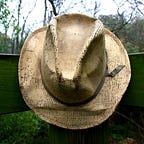Old Masters, Photography, Beasts, and Birds
In the 1990’s the photographer Alessandra Sanguinetti spent time on a farm in Argentina to photograph animals and the interactions they have with humans. The project eventually shifted its concentration to the humans themselves, but I decided to devote more time looking at and thinking about the animal pictures, in part because they are sometimes hard to stomach. Besides the sometimes pastoral, there is also violence, its aftermath, or its foreshadowing. The photographer made the choice to look closely at the subject matter so viewers could share the combined curiosity and discomfort.
There is a picture called Still Life whose title and composition call to mind a seventeenth century Dutch genre of painting dedicated to the bounty following a hunt. The paintings can be simultaneously gory and beautiful. In Sanguinetti’s photo the focus is on an outdoor table top with its center holding the carcasses of two deceased animals. What looks like a hedgehog lies vertically to the viewer, its head nearest to the point of view. Another smaller rodent has its head resting on the belly of the hedgehog. Its white fur contrasts with the dark fur of the other. They look like they could be in peaceful, cozy slumber, but the knife in the foreground, the blood, and what appear to be a collection of entrails suggest something else. There are some fruits scattered, a wine bottle on its side, and an empty pot. A white cat has just entered the scene, blurry from its motion.
Like the still life paintings of old, one is confronted with a complicated reflection. For some, this may be a picture of domestic tranquility. We are merely getting a peak into ingredients that will make a family meal, and the process is part of what enriches the experience of gathering. It is in that regard that the scene may be commonplace. But if it were entirely commonplace, would it be something to take a picture of?
For other viewers, of course, it is the violence that stands out. My initial reaction was to move on to some more bucolic scene, but upon looking at it in more detail, whatever squeamishness I started with was replaced by a confrontation with the reality that life involves clash and blood.
Referencing the Dutch masters calls to mind the great W.H. Auden poem “Musee des Beaux Arts,” inspired by a Bruegel painting of Icarus crashing to the earth after his ill-advised flight on wax wings to the sun. Rather than focus on the standard understanding of the story, a cautionary tale about ignoring one’s limits, the poem, and possibly the painting, look to the way the world seems to go on, taking little notice of the fantastic suffering that occurs parallel to the mundane. The poem takes note of the dog and horse, joining everything else in the painting that ignores the flailing legs of a young man upside down in the water.
This poem and its attitude struck me early in a viewing of a Robert Capa photo from 1949. The setting is identified as Poland, and the picture shows the empty street between two buildings that had been bombed. It is empty, except for piles of rubble, a woman sitting on the curb at one side holding a bowl, and a flock of pigeons descending in front of her. If viewed as a single entity, the flock appears almost as a flame, with a still base at the bottom rising to frenetic dancing toward the sky. It is a burst of energy in the middle of a scene that would otherwise be nothing but the deathly silent aftermath of destruction.
The woman is probably feeding the birds, but her gaze is turned beyond. It requires some zooming to notice that at the end of the street, through a hole in the pigeon frenzy, several heads peer over a fence. It is quite a distance for a conversation to be taking place, though not impossible. It could also be an exercise in mutual curiosity. Either interpretation can resonate within this scene, connecting through words or vision in a kind of shared alienation.
The birds never really stop in terms of the figure they form in the composition. They are deep into the photo, coming over the top of the building, a large flock still arriving to the feast. The motion of wings for those making their clumsy landing contrasts with the heaviness of the landscape, gray stone and rubble, all under a dreary sky. For the birds it’s party time, never mind humans getting their lives back together. As some flutter and go out of focus, barely recognizable as birds, it is tempting to see an angelic presence descending into this dark alley.
Still, with respect to Auden’s poem, animals are not unaffected by human destruction. While they might offer us hope through a broadened perspective, that life goes on even when we lack the leisure to notice, bombs and fires and tanks and all manner of disruption won’t discriminate according to species. The enthusiasm of the birds can be seen as the miracle of life happening even when a world is in shambles, but there is also the likelihood that they are just hungry, and they may be hungry because their food source has been hiding.
The pictures by Sanguinetti and Capa are, of course, dissimilar in both composition and content. If we take Auden’s point that “About suffering they were never wrong, the Old Masters,” and see these different pictures through this point, it brings them into a common meditation regarding the brevity of a single life, as well as an awareness of something permanent, even if that is the inevitability of change. Both frame a sense of privacy that almost makes it easy to forget that there is one more participant, close to the life and death of the scene, observing it all through a lens.
